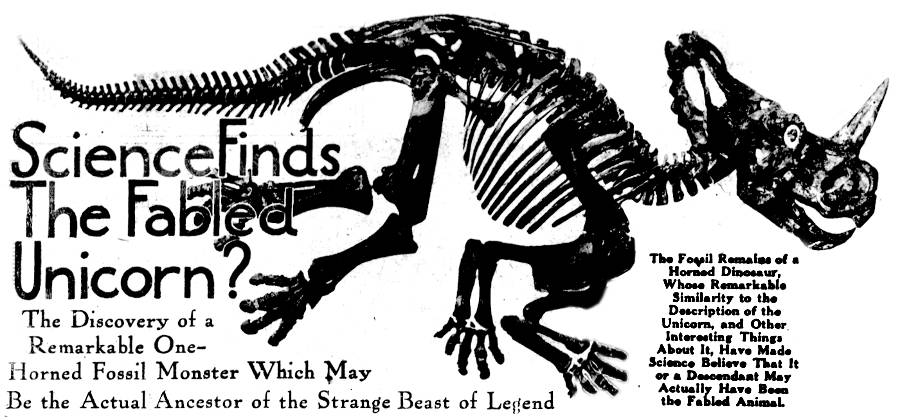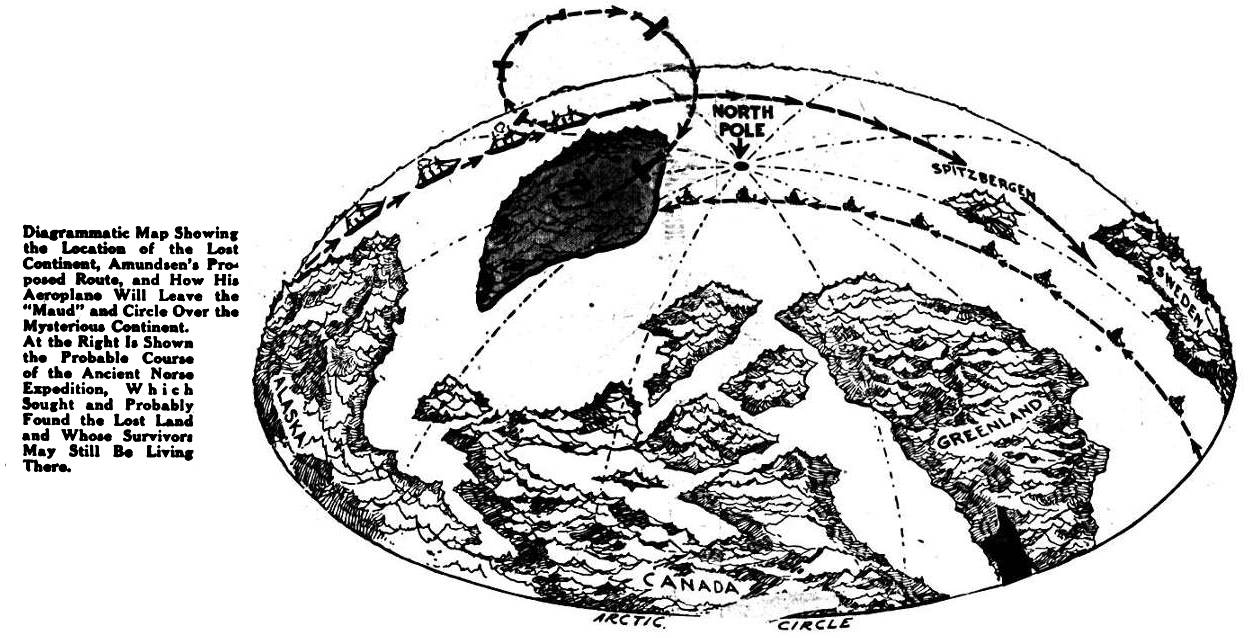 Car transformed into a dinosaur to promote the 1925 Lost World movie.
Car transformed into a dinosaur to promote the 1925 Lost World movie.
Tag: Dinosaurs
One Million Years B.C., 1966
The Beast of Hollow Mountain, 1956
 A dispute between two rangers takes a weird turn as some of Jimmy’s cattle goes missing, only to be found dead in a swamp. Legend has is that as the swamp dries up strange occurrences happen, in this case a T-Rex comes forth to wreck havoc. Unfortunately, we don’t see the monster until there is about 20 minutes left in the movie.
A dispute between two rangers takes a weird turn as some of Jimmy’s cattle goes missing, only to be found dead in a swamp. Legend has is that as the swamp dries up strange occurrences happen, in this case a T-Rex comes forth to wreck havoc. Unfortunately, we don’t see the monster until there is about 20 minutes left in the movie.
The Greatest Land-Dragon Ever Known, 1913
From the The San Francisco Call., September 25, 1913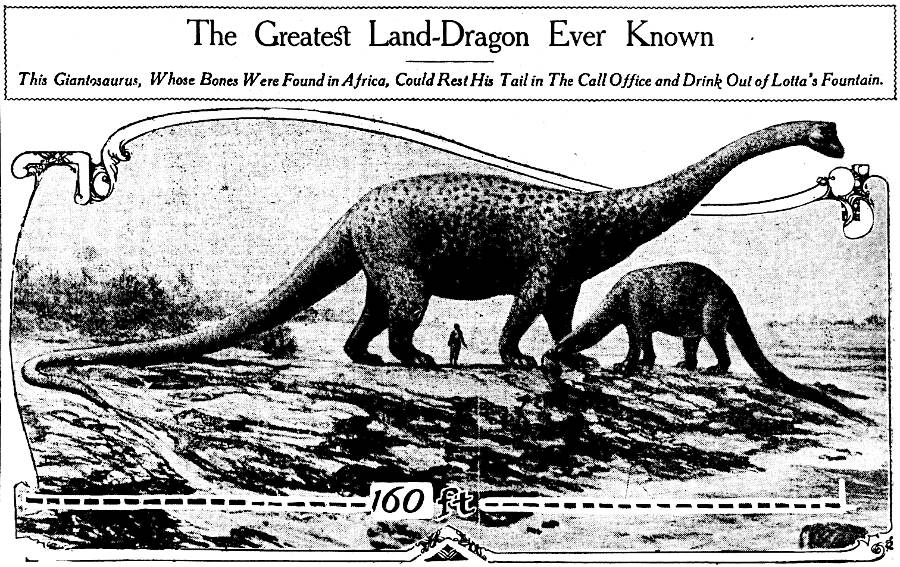
HERE is an astonishing picture of the reconstructed Gigantosaurus Africanus, the most prodigious creature that has come to light. Our special artist has now reconstructed the great land dragon and has set it by a man and Diplodocus Carnegii, to emphasize its enormous size. Recent discoveries have revealed in Africa remains of a land dragon whose length measured some 160 feet, or about the distance from The Call office across Market street to Lotta’s fountain. The monster was discovered by German savants at Tendaguru, in German East Africa. An almost complete skeleton was obtained. The cast of the upper arm bone, or humerus, now at the British Museum of Natural History, South Kensigton, and descriptions of the rest of the skeleton show that this colossal beast was a near relation of Diplodocus Carnegii, in Pittsburgh. Now, Diplodocus was just 84 feet long and stood 11 feet high at the shoulder. His arm bone measured just 3 feet 3 inches long. The arm bone of the new giant, Gigantosaurus Africanus, was as long as the whole leg of Diplodocus; it measures now just 7 feet 1 inch, but during life it was certainly some inches longer, for no allowance has been made for the gristle which must have capped both ends. It may be that Gigantosaurus may lose something of his glory, at any rate as far as his length is concerned, for it is assumed that he was a long tailed dragon, like his American cousin. He may not have been. In height Diplodocus was nowhere; his 11 feet at the shoulder is far eclipsed by the 22 feet of his rival. Naturally, it is difficult, not to say dangerous, to dogmatize on the theme of the habits of Gigantosaurus. 11c lived during that remote period of the world’s history during which the lower cretaceous rocks were formed; a period which antedated the birth of man by several million years. We shall probably be not far from the truth in regarding him as an aquatic, or. at any rate, an amphibious creature. That he was a vegetarian is shown by his teeth, and that he was dull witted is proved by the ridiculously small size of his brain cavity, less than would hold a man’s fist. A man is placed in the drawing (under Gigantosaurus Africanus) merely for the comparison of size.
Flying Dragon and Reptiles
Evening Star, Washington D.C., October 18, 1908
FLYING DRAGON AND REPTILES
By James Carter Beard
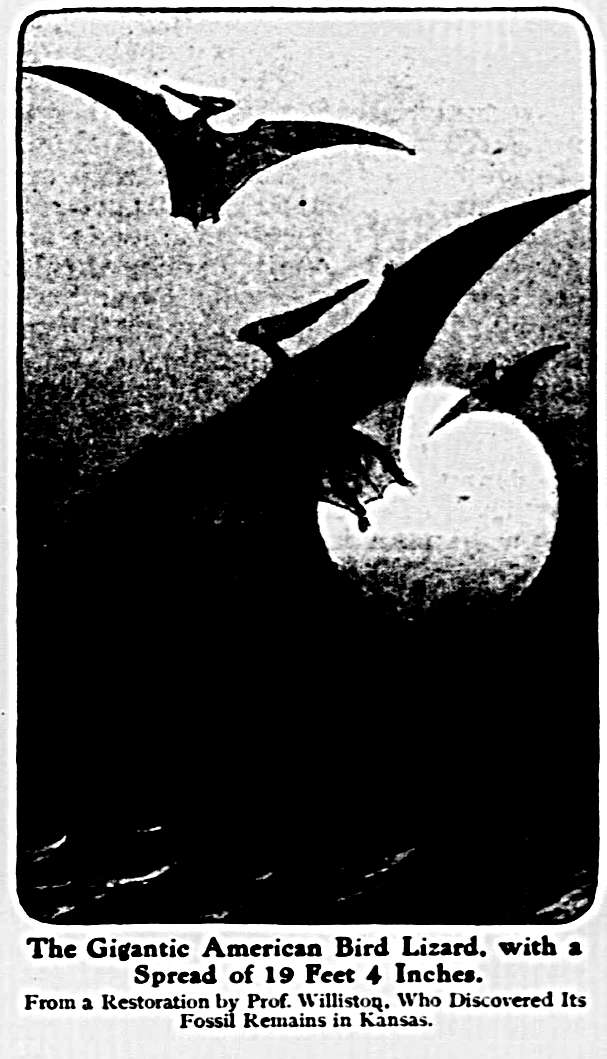 IT was not many years ago, at a time when winged dragons were ranked with centaurs, hippogriffs, unicorns, and mermaids as impossible monsters, to be looked for only fairy tales and heraldic devices, that to everyone’s fossil remains of these same winged dragons were actually discovered in limestone in the vicinity of the village of Solnhofen, Bavaria. Speaking of these fossils, Charles Kingsley facetiously remarked. “People them pterodactyls, only because they are ashamed to call them flying dragons after denying so long that flying could exist.
IT was not many years ago, at a time when winged dragons were ranked with centaurs, hippogriffs, unicorns, and mermaids as impossible monsters, to be looked for only fairy tales and heraldic devices, that to everyone’s fossil remains of these same winged dragons were actually discovered in limestone in the vicinity of the village of Solnhofen, Bavaria. Speaking of these fossils, Charles Kingsley facetiously remarked. “People them pterodactyls, only because they are ashamed to call them flying dragons after denying so long that flying could exist.
But folks, and especially scientific folks, before these fossils were found, were not entirely without excuse for doubting the existence of such creatures. The only fact is that the only animals now living, barring insects, that can really fly are birds and bats. Many animals said to fly, as, for instance, flying squirrels, do not really fly; but are capable of sailing down from a higher to a lower position in a more or less slanting direction, only by the aid of a flap of skin extending along the flanks from the fore legs to the hind ones, which, when the limbs are spread apart as far as possible, makes a sort of parachute like extension from the body, preventing an abrupt descent to the ground Neither do flying fish really fly; but, impelled by a vigorous rush through the water, spring, wet and glittering, from a wave, and. upborne on their large, flat breast wings, which serve them as aeroplanes, are carried in a straight course through the air as long as the impetus lasts or their wings remain wet, after which they drop incontinently back into their native element They sometimes travel for two hundred yards at the rate of fifteen miles an hour, rising twenty-five feet above the water It is magnificent; but it is not flying There are several species of lizards too that take short swoops through the air, supported by an expansion of the skin stretched on several much elongated ribs, so as to form a sort of half-kite on each side of their bodies. One species called the flying gecko is furnished with a broad flap or rim which extends around body, tail, and limbs But the most singular of these so called flyers is the flying treetoad, which, by means of membranes extending between its fingers and toes, is enabled as it leaps to descend more easily from branch to branch. Continue reading “Flying Dragon and Reptiles”
Searching for a Gigantosaurus, 1914
30 feet of neck on shoulders, 20 feet high
That’s What Newest Found Gigantosaurus Has, and Now the Scientists Are Going to Search For A Live One in Africa’s Swamps.
The Washington Herald, December 27, 1914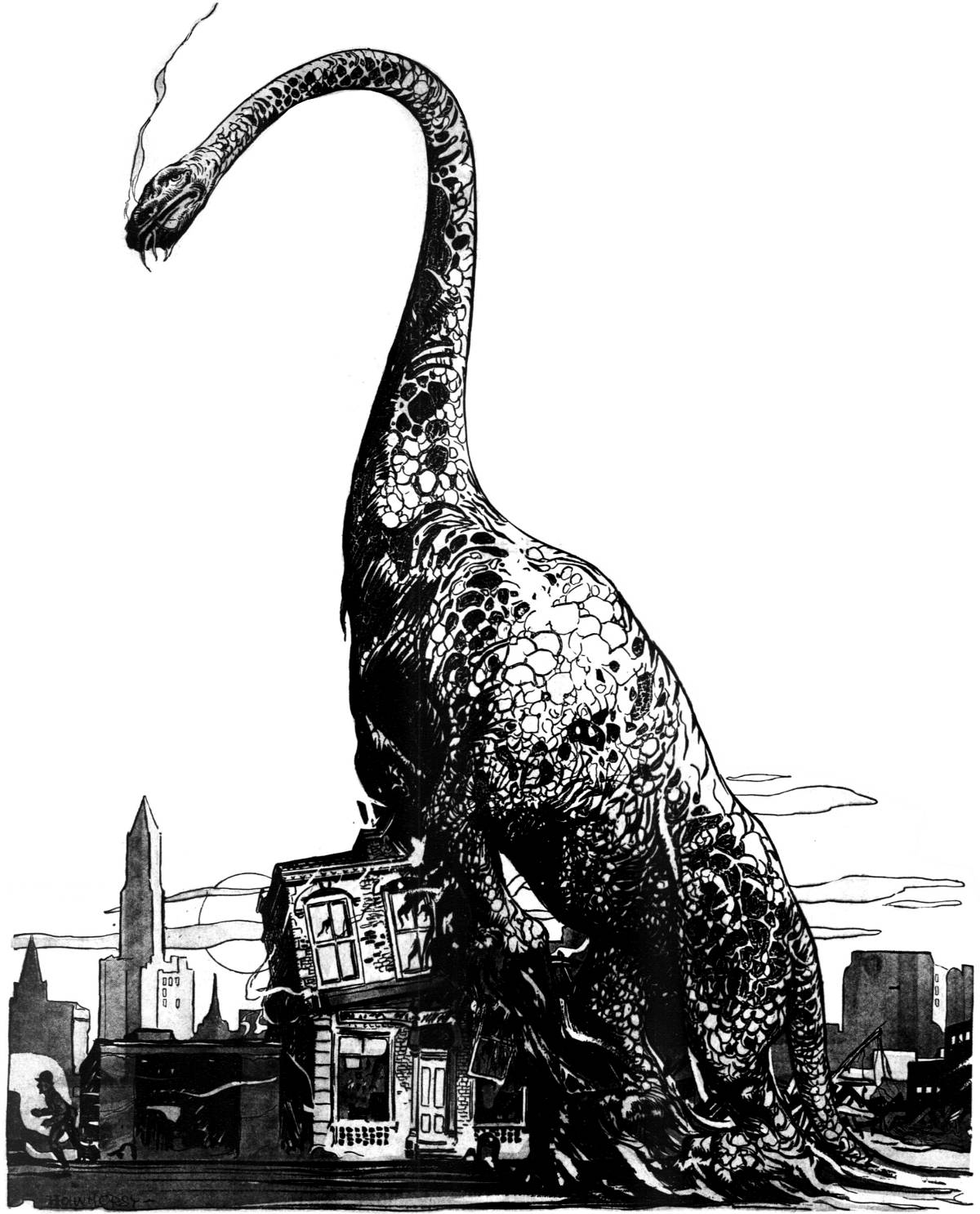
SUPPOSE a gigantosaurus with a length of a hundred feet and a height of twenty feet at the shoulders should come walking along the main street of the town! Wouldn’t It cause a little excitement? Continue reading “Searching for a Gigantosaurus, 1914”
Science Finds The Fabled Unicorn?
#NationalUnicornDay
Action Stories, Dec, 1940
Lost Arctic Continent? 1922
From The Washington Times, Washington D.C., September 10, 1922


